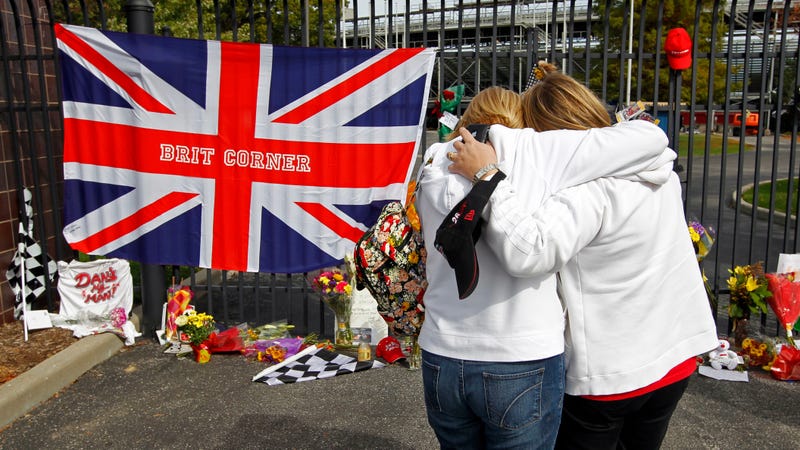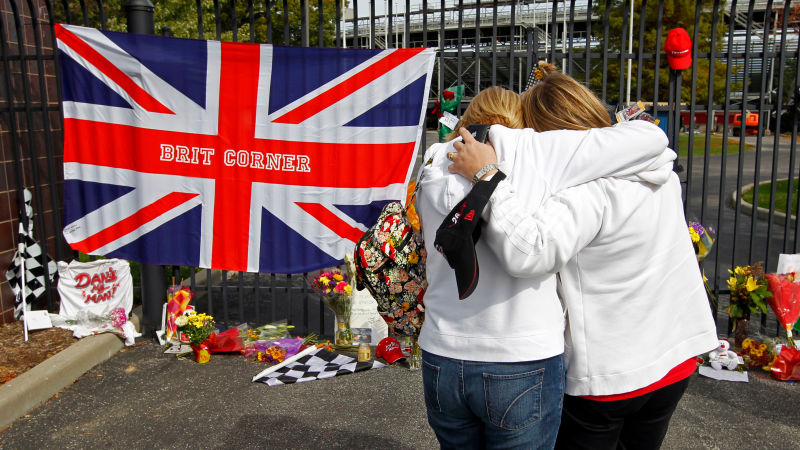
On Sunday, August 19, IndyCar driver Robert Wickens was airlifted from Pocono Raceway after a bad wreck that left him with orthopedic injuries, pulmonary contusions, and the need for multiple surgeries. I sat in the stands watching this happen. This is the second time in four years that I’ve seen a driver flown out of Pocono in a medical helicopter. The first was in 2015, after Justin Wilson’s fatal accident.
A race track should never fall silent. A grandstand should always be filled with cheers, chatter, laughter, and shouts. I sat in the grandstand for both of these accidents and listened as, for a brief moment, everything stopped. I was sitting with a group of notorious shit-talkers, and we all stood, stunned, our hands pressed to our mouths in shock. You could have heard a pin drop.
Danger is undeniably an intertwined facet of racing. Yes, it’s an inherent aspect of a sport that asks its participants to strap themselves into a 200 mph rocket and shove their way past twenty-odd other delicate human beings belted into explosion-powered hunks of metal and carbon fiber. And yes, drivers accept that risk—if they didn’t, we wouldn’t spend our Sundays glued to the television.
That does not mean we should get complacent.
The way drivers relate to their sport is much different than the way the spectators and fans do. My boyfriend drove down to Pocono from Ontario and cried in the grandstands as he watched his two favorite Canadian drivers be pulled from their cars because we were all convinced we had watched someone die. But James Hinchcliffe, whose hands were struck by debris in the Wickens accident, was skewered by his suspension in 2015 and still got back behind the wheel. He’s still going to race this weekend at Gateway. My boyfriend, who has been watching racing right out of the womb, has no idea if he wants to set foot on another track.
Advertisement
Drivers have their blinders on. It’s a lot easier for them to accept that they might be injured or killed behind the wheel when racing is their driving passion in life. It’s the same way we accept that we might get into an accident when we drive to work—if it wasn’t such an integral part of our existence, we might question why the hell we’re doing this in the first place.
And that’s why motorsport owes its drivers a constant push to make the racing safer, to cut down the risk factors. It shouldn’t take two fatal head injuries to understand that it might be a good idea to implement some head protection in an open cockpit. It shouldn’t take a life-threatening excursion into a rusty fence to understand that the barriers need improvement. A driver should not have to die in order for a change to be made.
This concept is pretty foreign in racing right now. In the aftermath of outrage at accidents, changes are made. That’s the way it’s always been done. A driver crashes at a particular area on the track? Fix that, nothing else. Pieces of car fly into some grandstands and injure a few fans? Reinforce the barriers near trackside seating; the rest of it can stay. We solve the problem at point A, but disaster can still happen at point B.
Advertisement
In a recent AP article, noted motorsport journalist Jenna Fryer expressed an attitude that has become pervasive in the racing world: we romanticize danger and demonize fear. Racing is compartmentalization and willful ignorance. Accidents happen, but we shouldn’t focus on that instead of the sport.
While Fryer does note that changes will “probably” happen as a result of recent accidents, the article really gets at the heart of the biggest issue in racing today: we simply don’t do very much. It’s easier for fans, journalists, and drivers alike to accept a desensitization to violence and death that leads to speculation and callous claims that drivers understand the risk as one of those drivers lays in the hospital in an unknown condition. Change is hard to understand and harder to undertake, and with no pressure to do so, motorsport is stuck in a dangerous limbo.
Safety should be constantly evolving. We should have defense as well as offense. Highly trained medical professionals waiting trackside for an accident are hugely important to the sport—but where are the teams of analysts proposing changes and working on new ideas after each race? Why aren’t we taking more preventative measures rather than simply reacting to whatever disaster happens to strike after a driver and their family is already suffering?
Advertisement
The current nature of motorsport makes it difficult to change. In the 1970s, Formula One saw drastic improvements in safety to older tracks that were taking the lives of World Champions and rising talents. Part of what made it so effective was driver involvement. Jackie Stewart was at the helm of a squad of drivers who would analyze the track before the race and demand changes be made before anyone set foot in a car. It was public. It was well-known. Not every driver agreed, but because of those changes, barriers and track surfaces started to improve.
Today, that’s next to impossible. We talk a lot about the sanitization of drivers, how many of them don’t have personalities or are groomed for perfect PR responses. Today, it’s pretty tough to have a hot take without the entire world immediately knowing about it, without having to worry about sponsorship or contract implications.
And safety is just one of those issues. Critiquing the very series you race for isn’t a move you can really make any more, as much as we need it. Take, for example, Sebastien Bourdais. After the repairs to the fence at Pocono, a senior driver was asked to take a look at the fix and analyze its quality. Bourdais was horrified at the welded, zip-tied mess. He did not want to race. His helmet and HANS device were brought to the car anyway, and he got back behind the wheel. It didn’t really seem like he had much of a choice.
Advertisement
Drivers today have lost their leverage in this fight. Instead of a series depending on drivers, the drivers depend on the series. Anyone who gets behind the wheel is at the mercy of sanctioning bodies and potentially misguided officials. You can only hope you’ll be listened to and understood, but we don’t live in an era of driver protests and outspoken demands to pressure for change anymore. In the hyper-competitive motorsport world, dissenting opinions could be career-ending moves.
The problem is, it doesn’t seem like there’s much we can do even if the drivers started speaking out. Revamping motorsport’s safety regulations each season—from tracks to cars to pit stops to fan experience—costs money. We aren’t filling stands or drawing huge numbers on the broadcasts. It’s hard to change things; but how are we supposed to keep fans interested when their favorite drivers are dying? Danger can be exciting, and we know racing is dangerous; we can’t keep people interested if it’s going to be deadly.
Advertisement
Right now, it doesn’t seem like there’s an easy answer, because if there was, things would have already changed. I’m not a physicist, scientist, doctor, businessman, whatever. I don’t have the answers as to what could have made Wickens’ crash safer. I don’t have a strategy for protecting heads and necks and limbs. I don’t have a contingency plan for every possible situation that can happen, and it would be next to impossible to achieve a feat like that.
But instead of simply accepting that racing is dangerous, instead of shrugging our shoulders and moving on with our lives, it’s time we start demanding changes. Racing can always be safer. We can always find one more way to prevent one more accident. That’s the lesson we should take away from the horror of mangled metal and broken carbon fiber.
Racing is dangerous, and drivers know that, but there is always more we can do. Safety should always be our priority.













